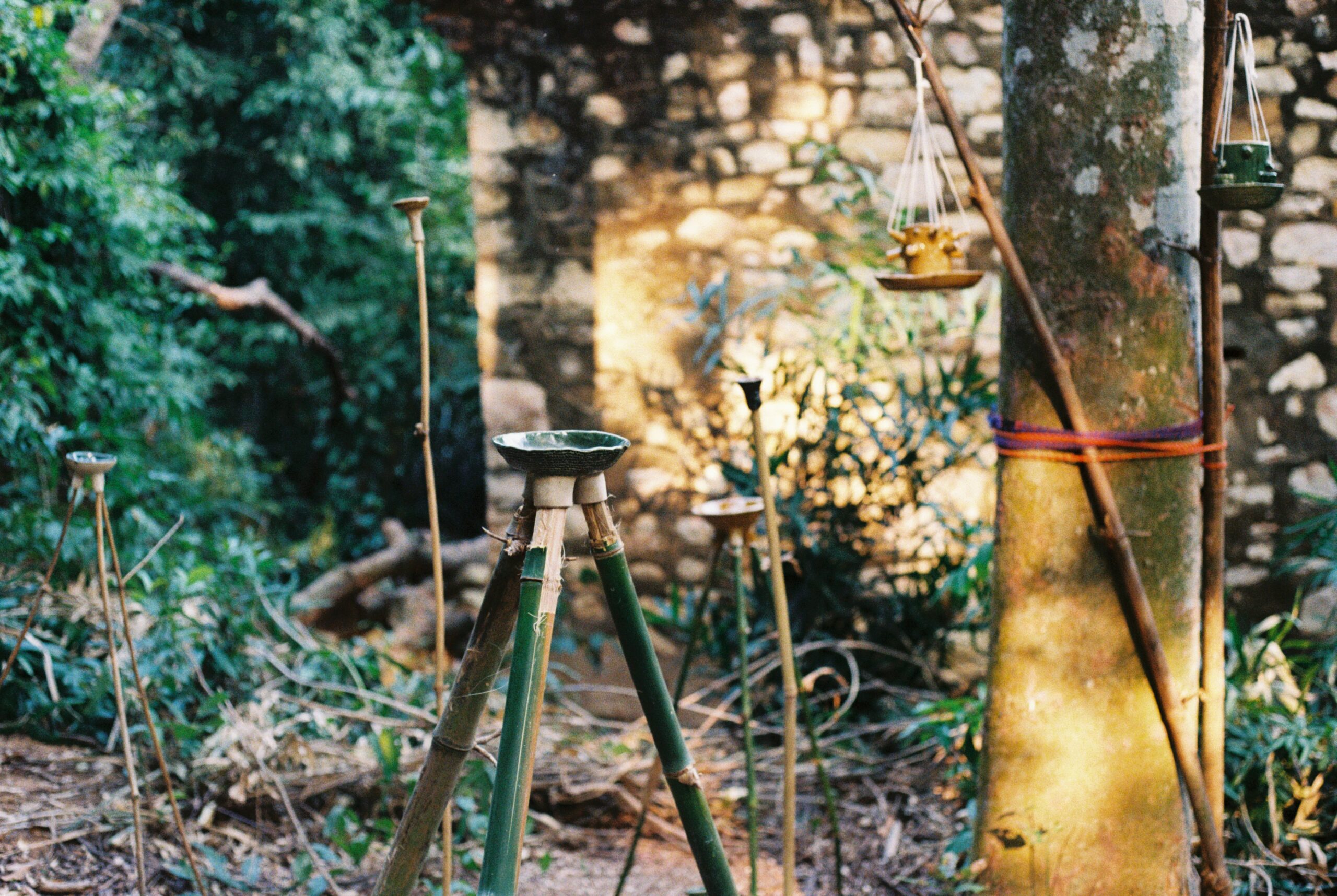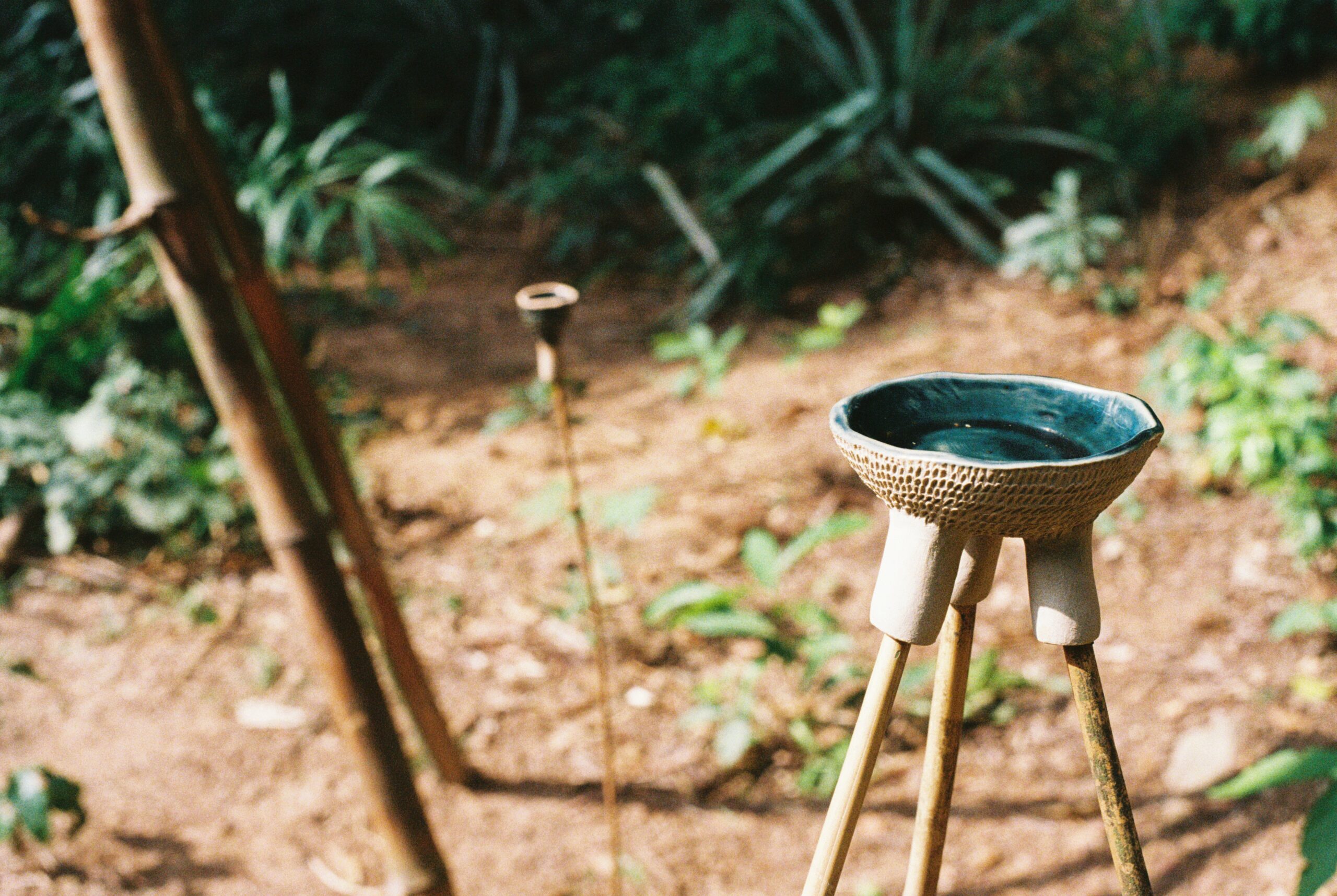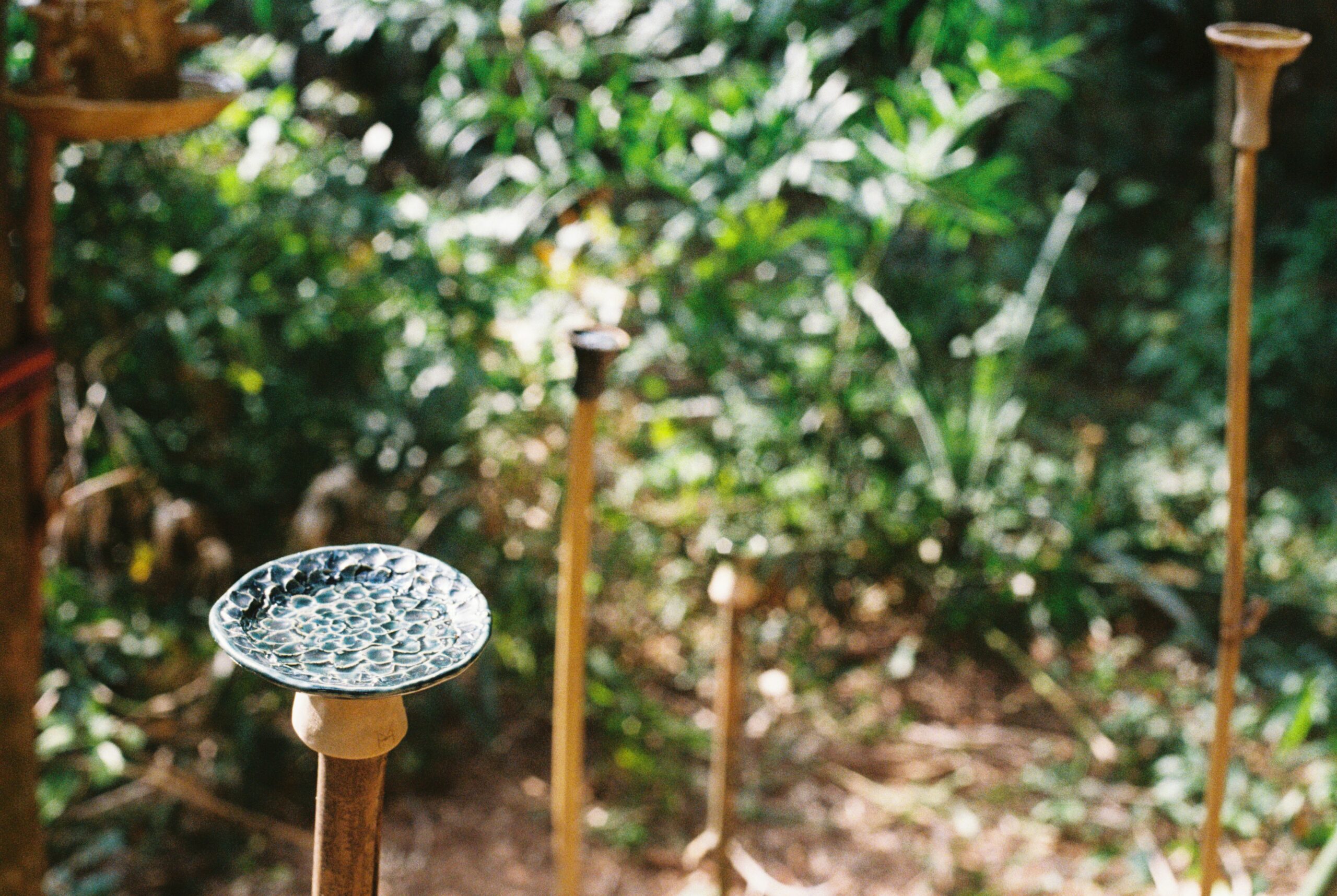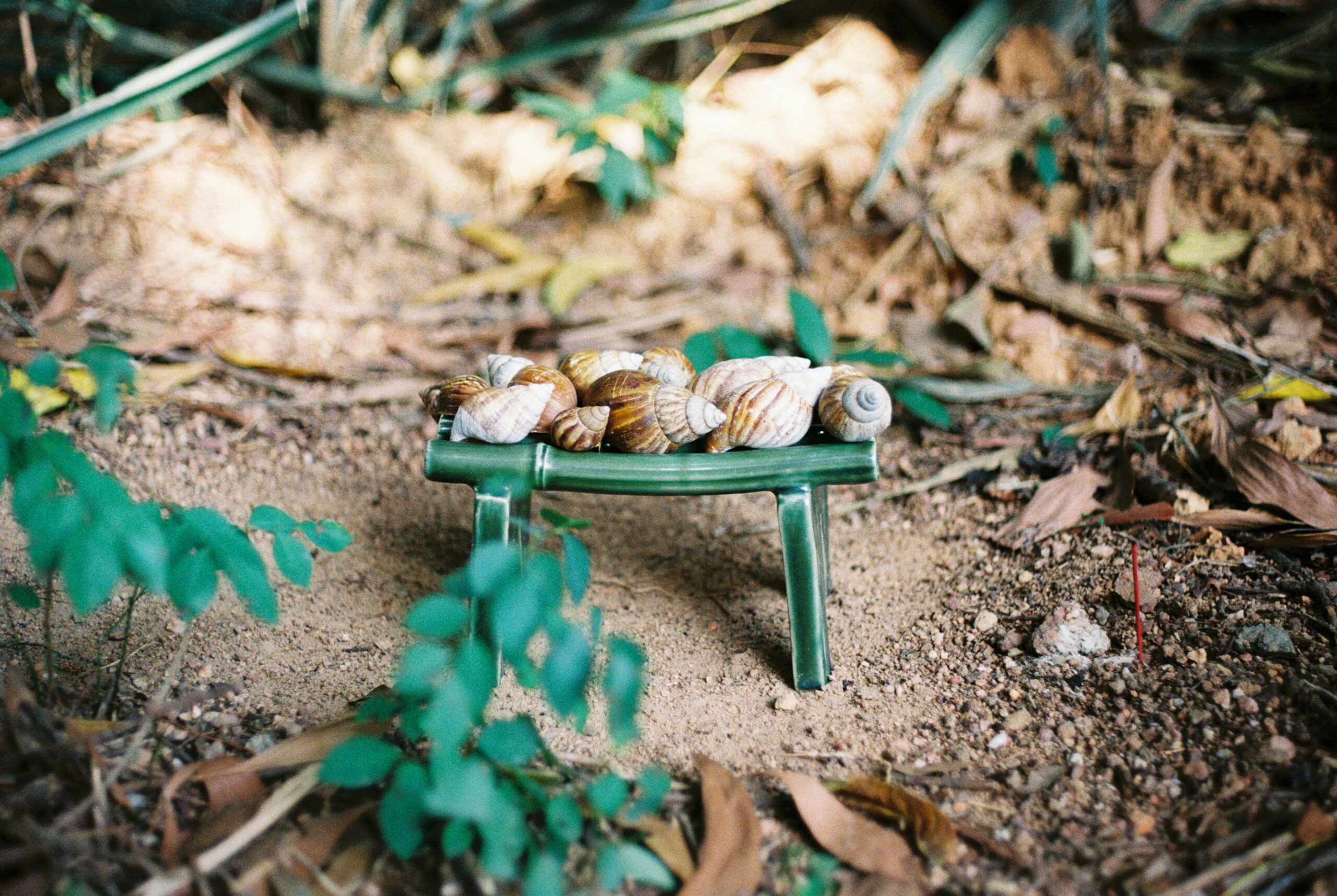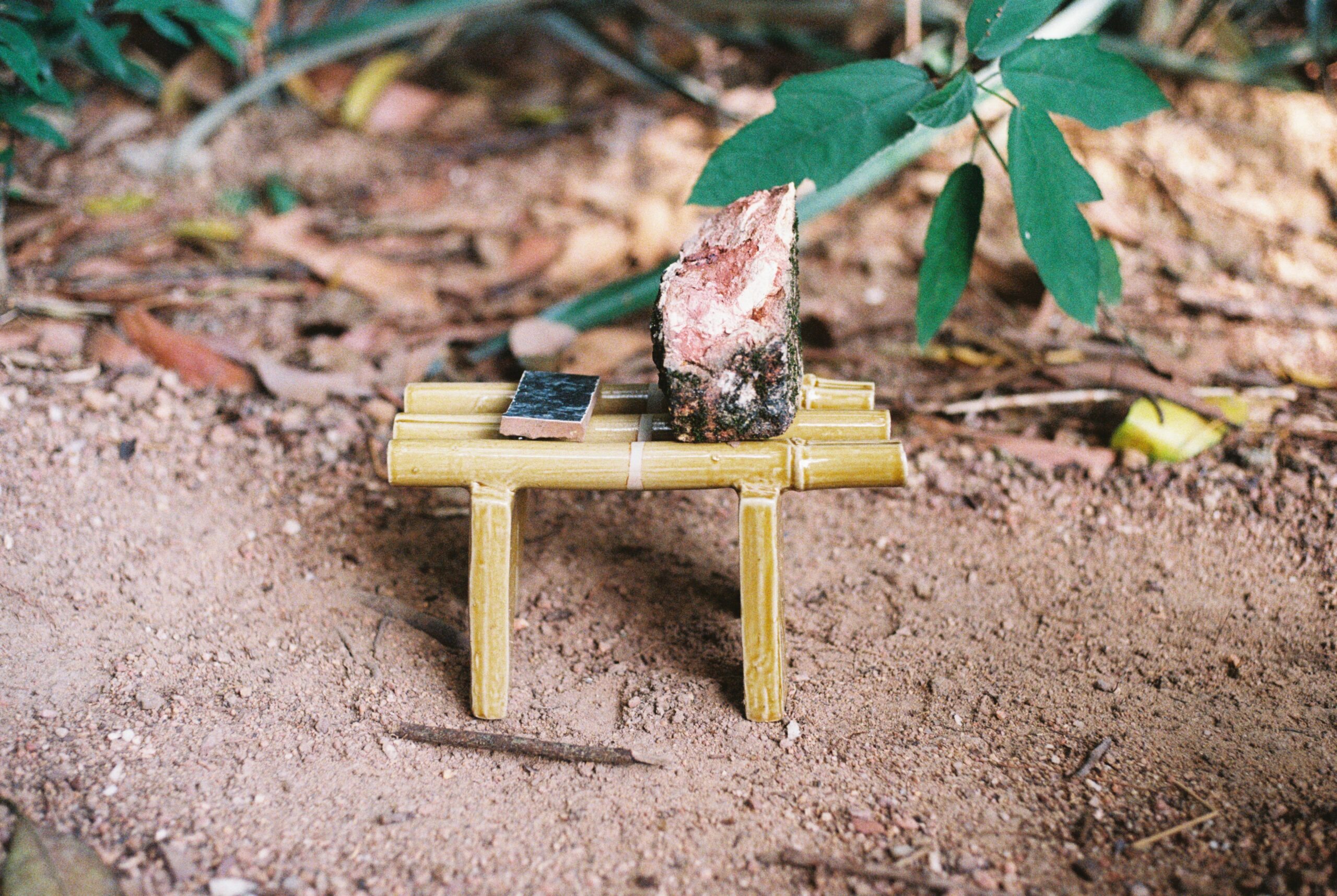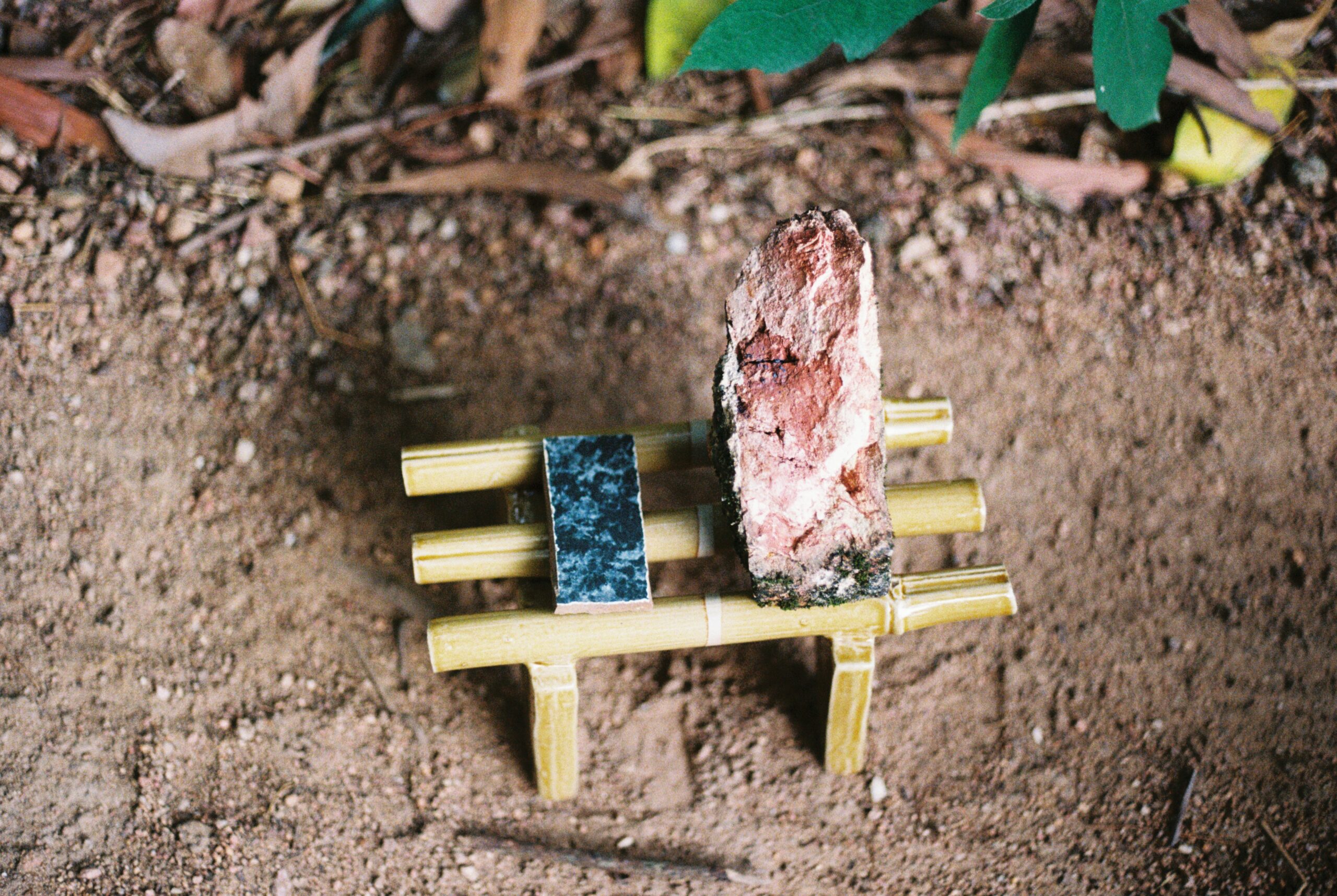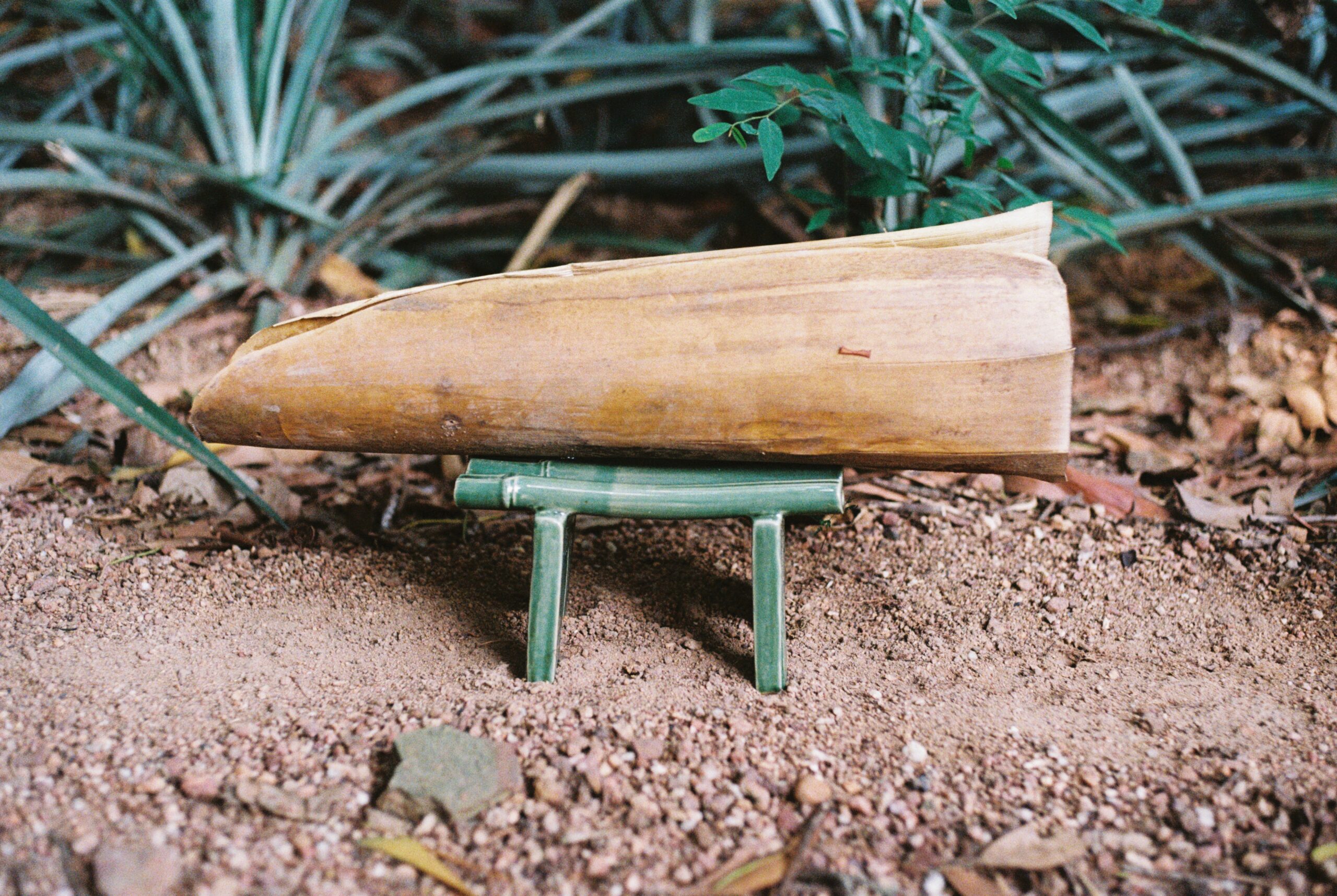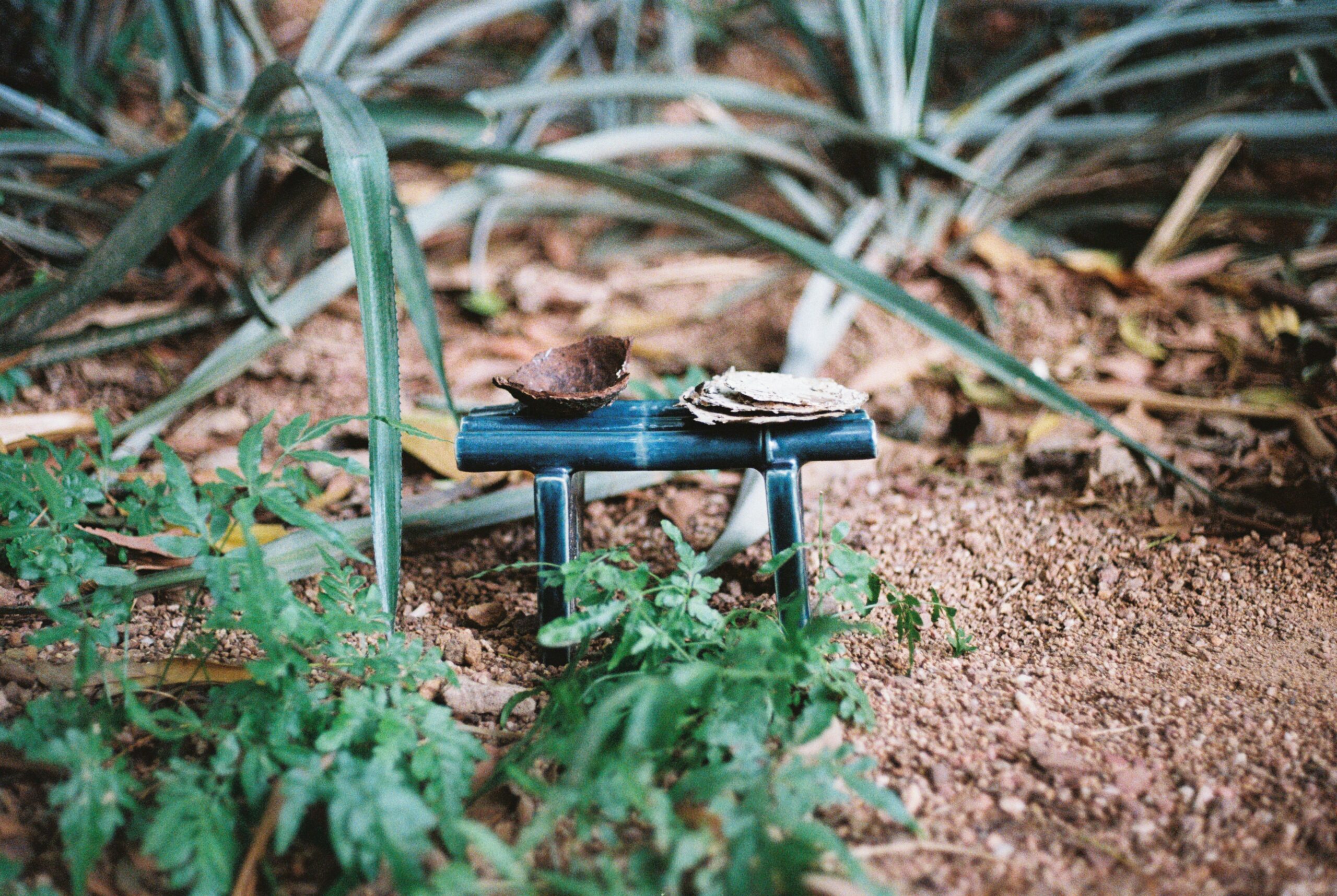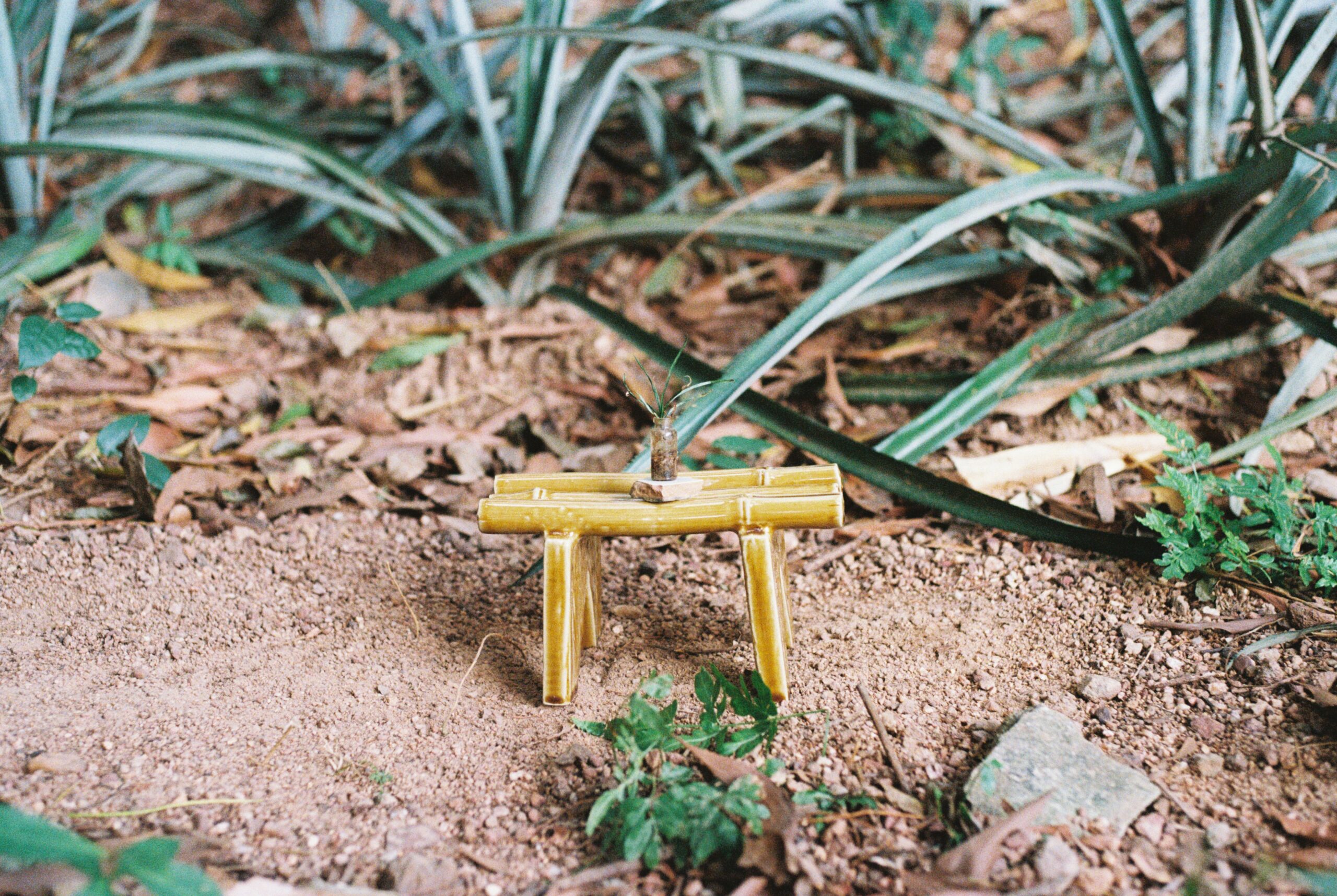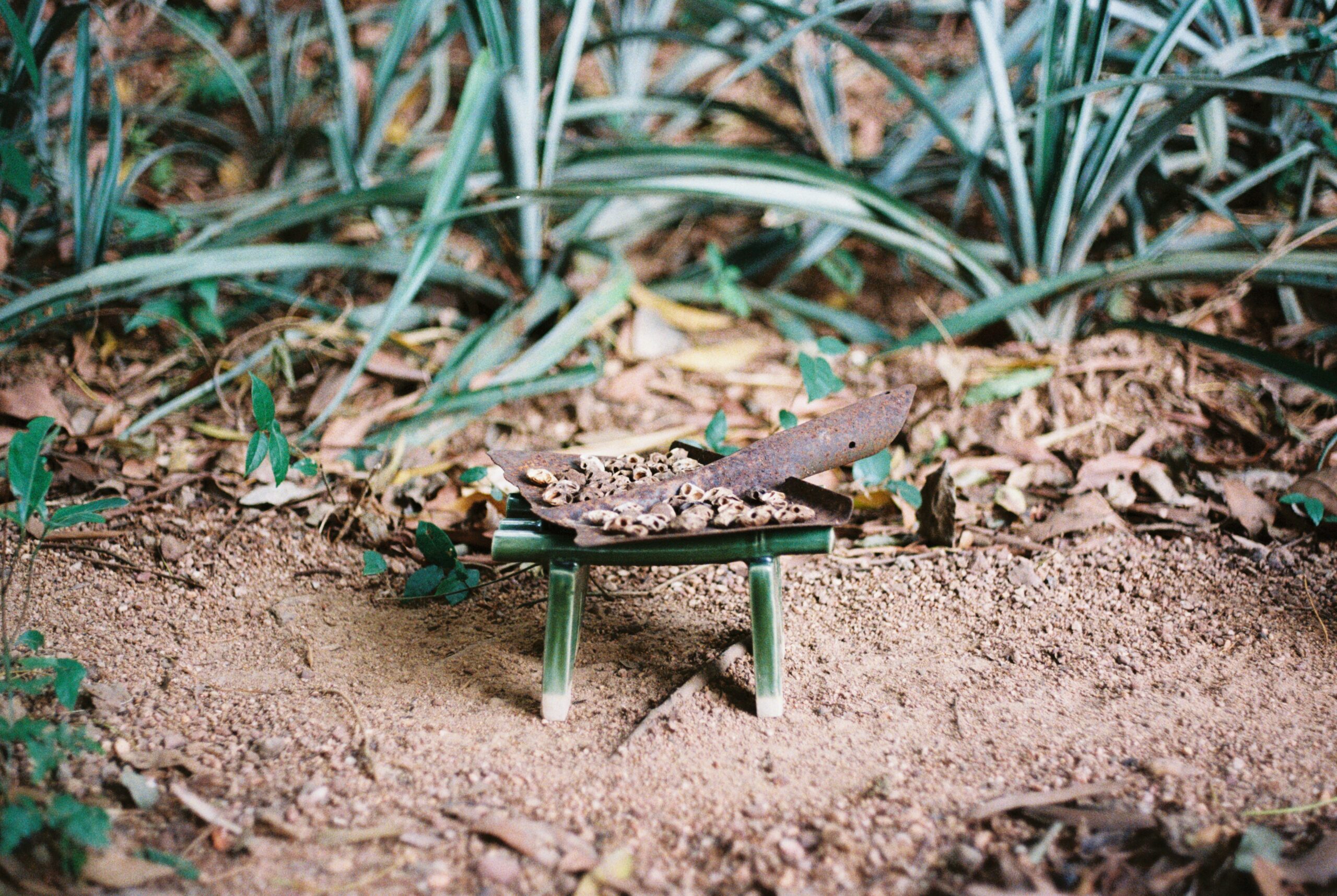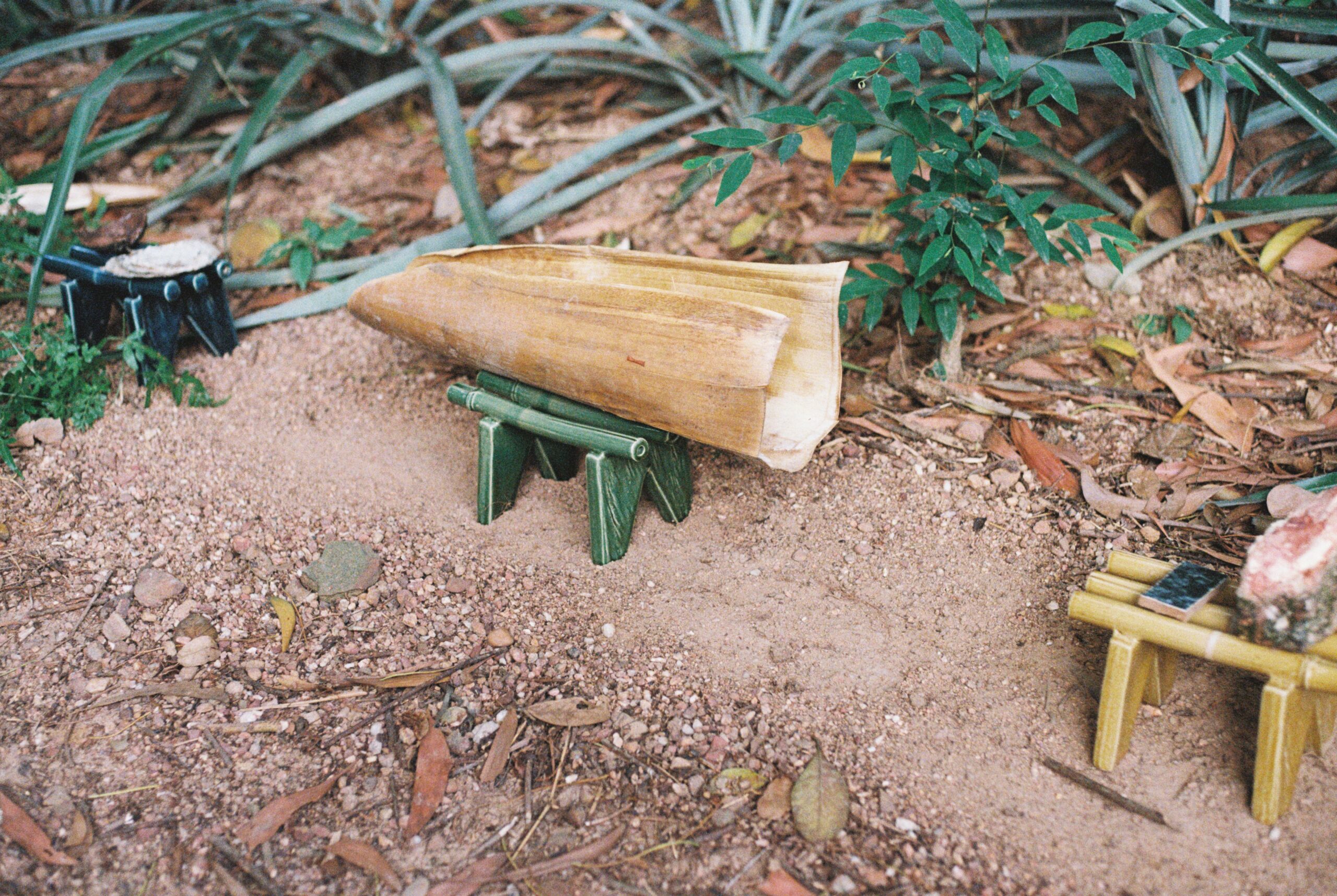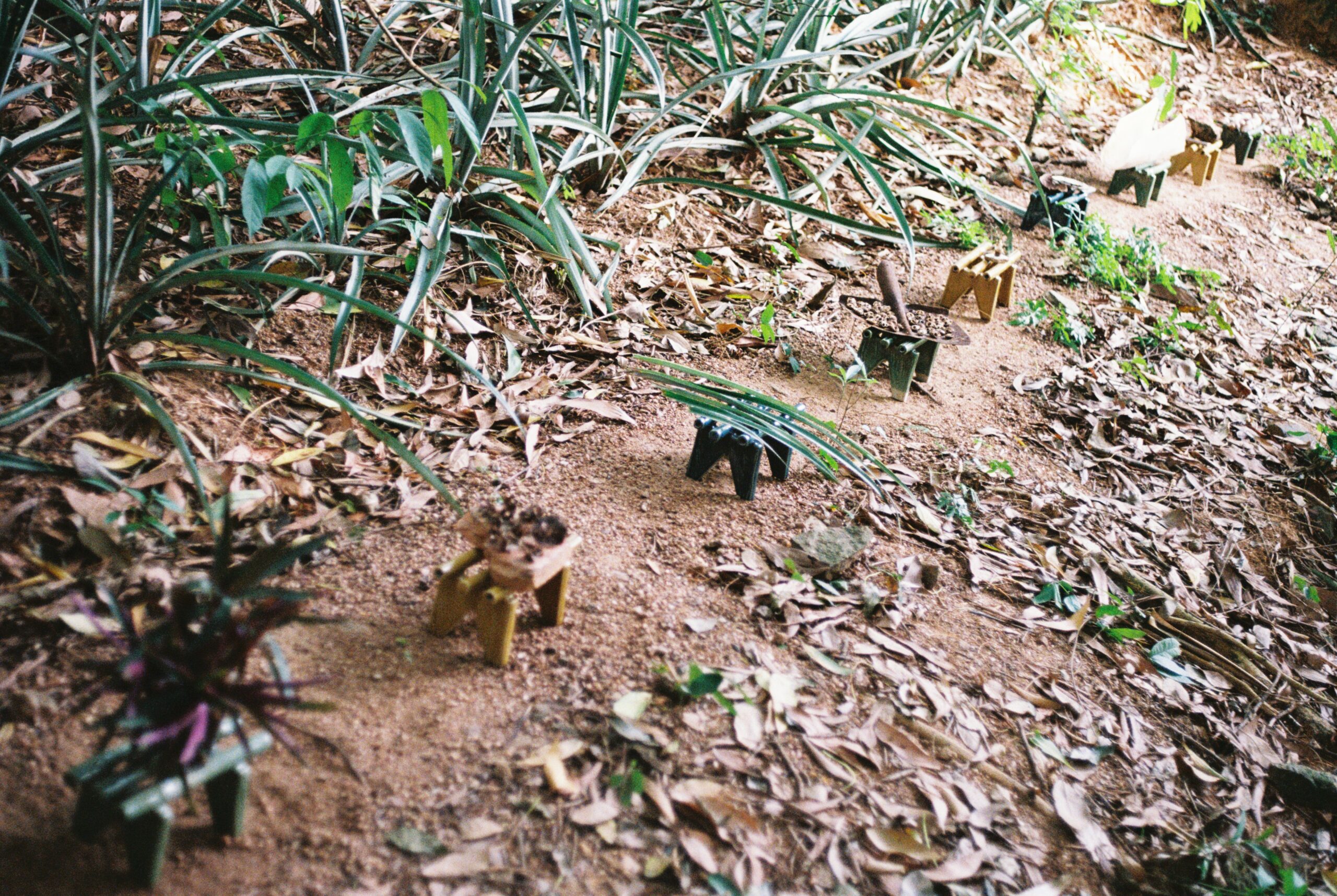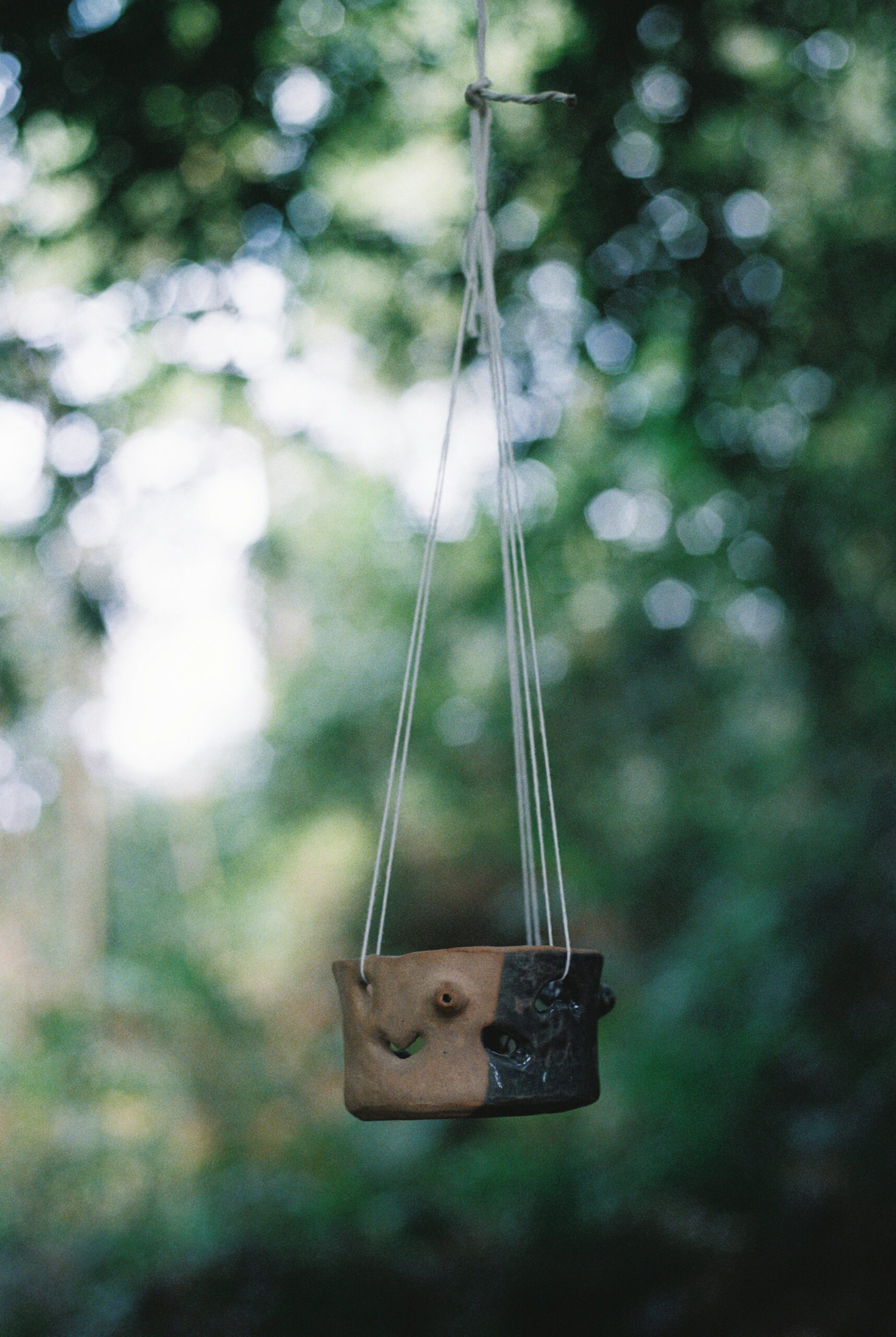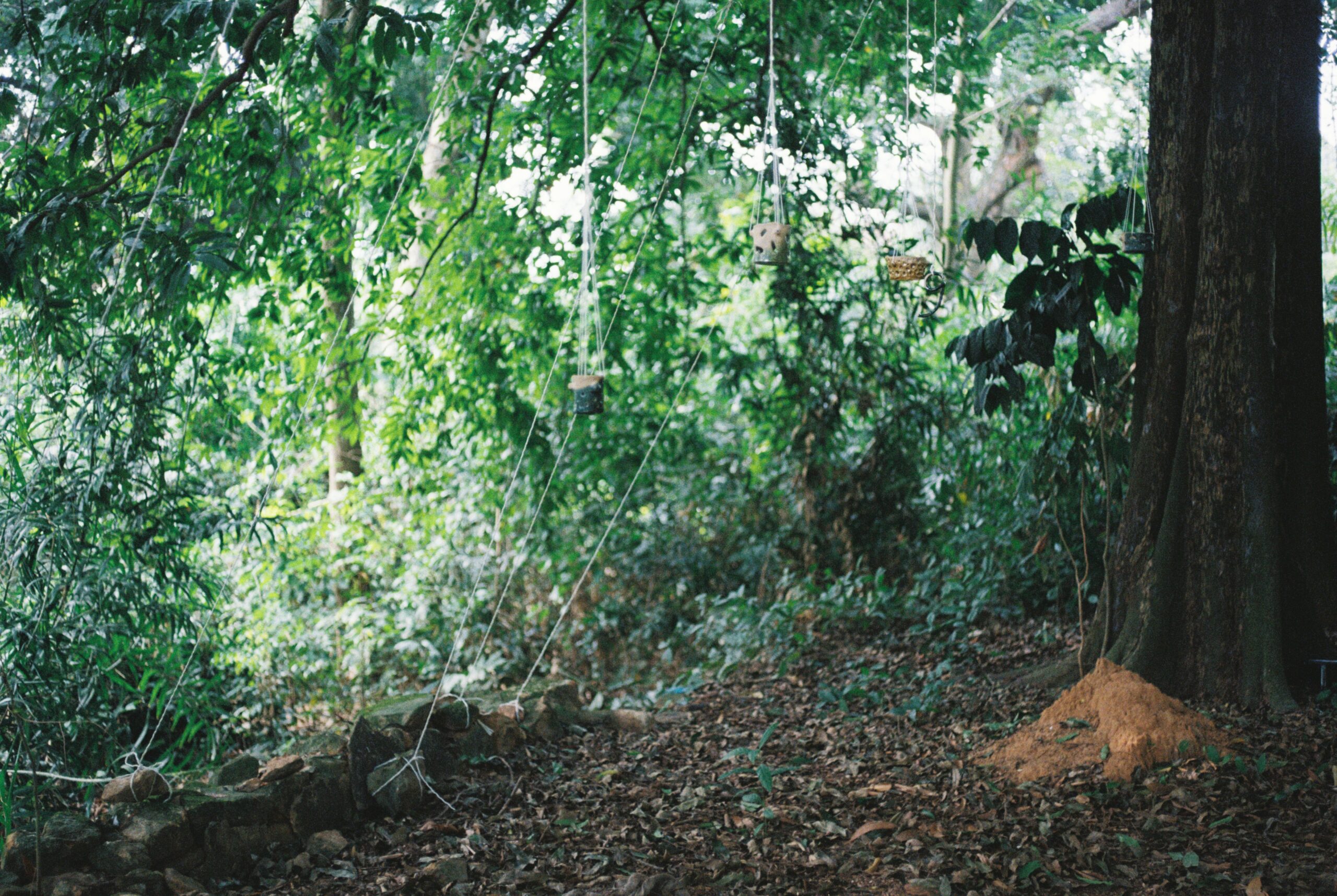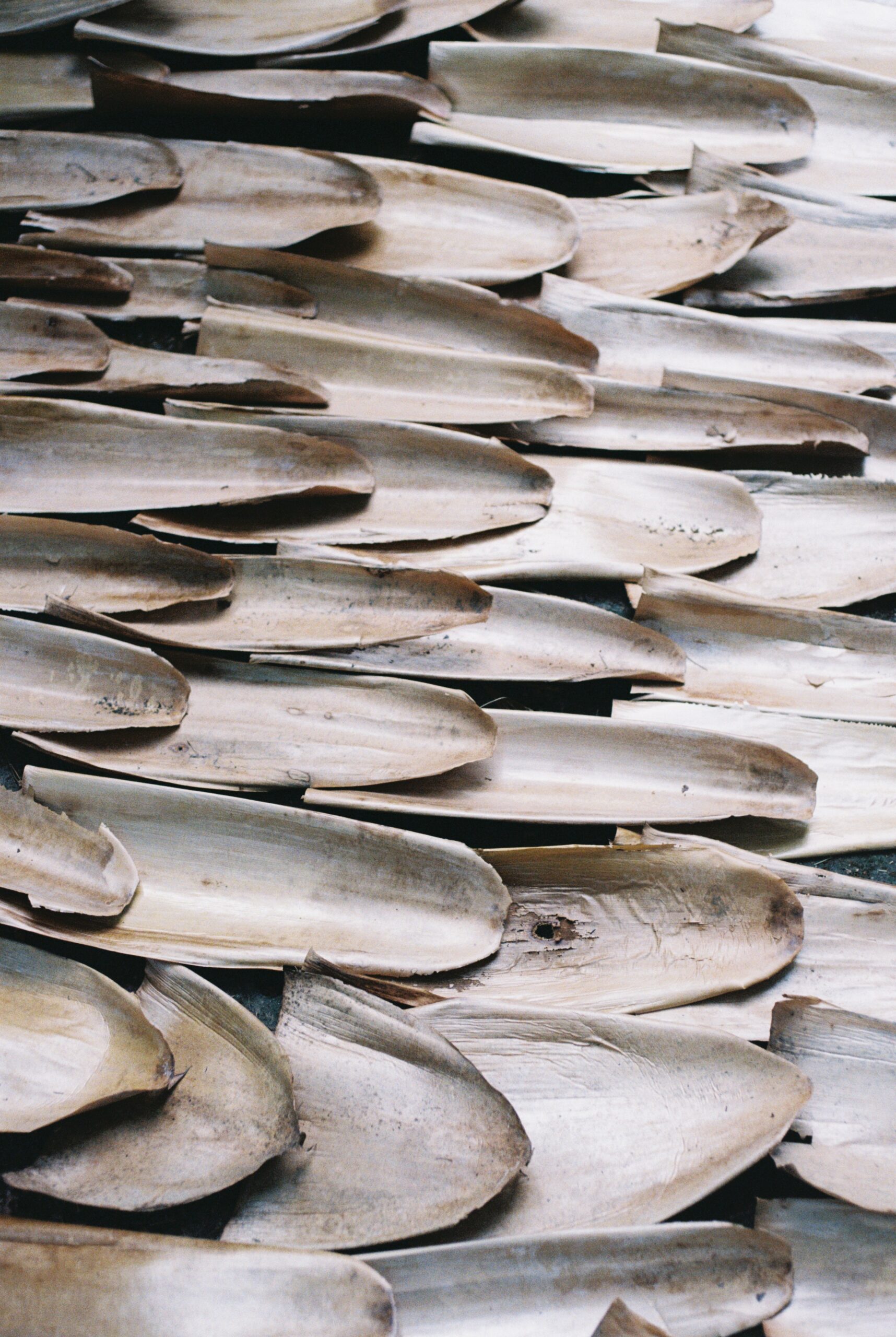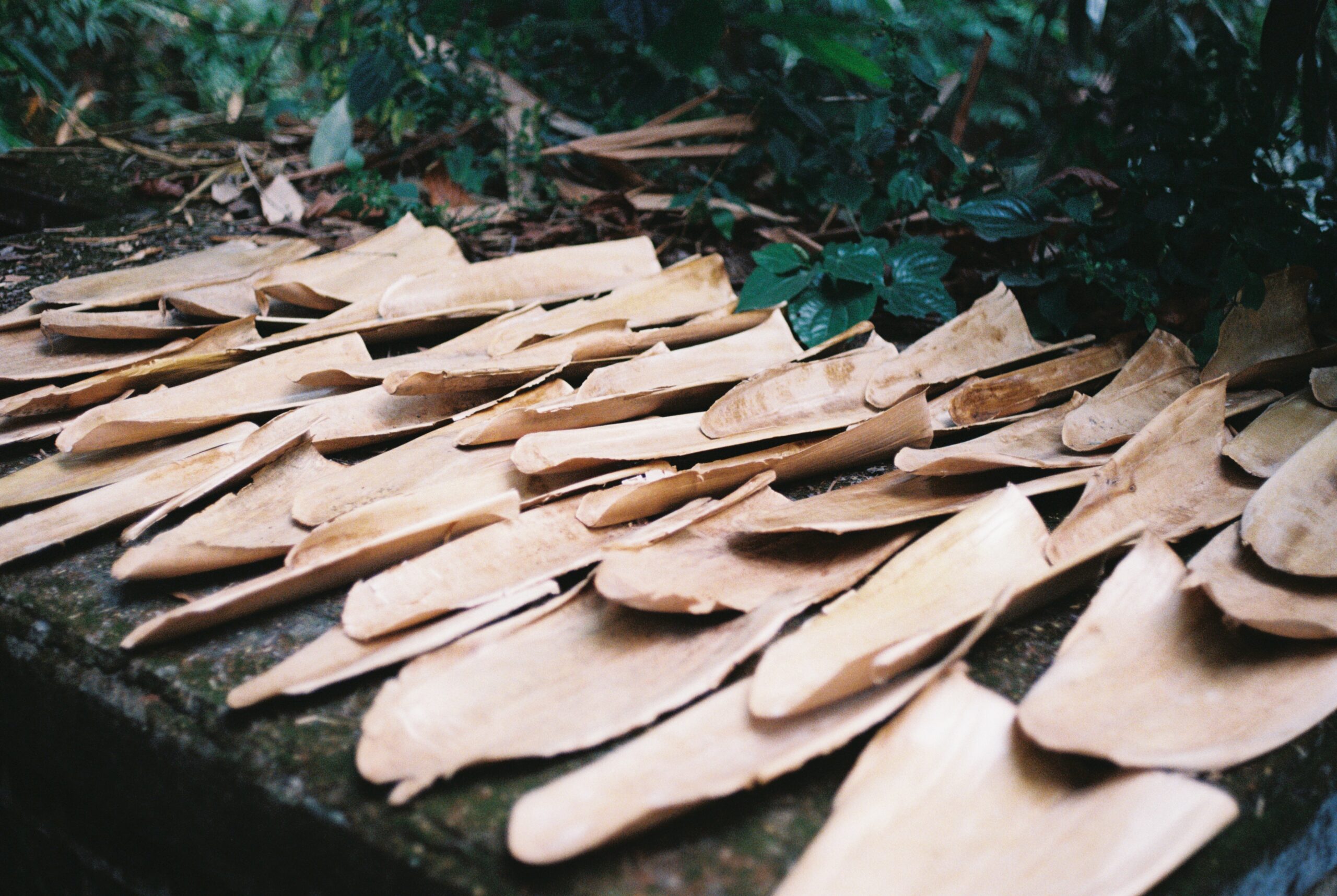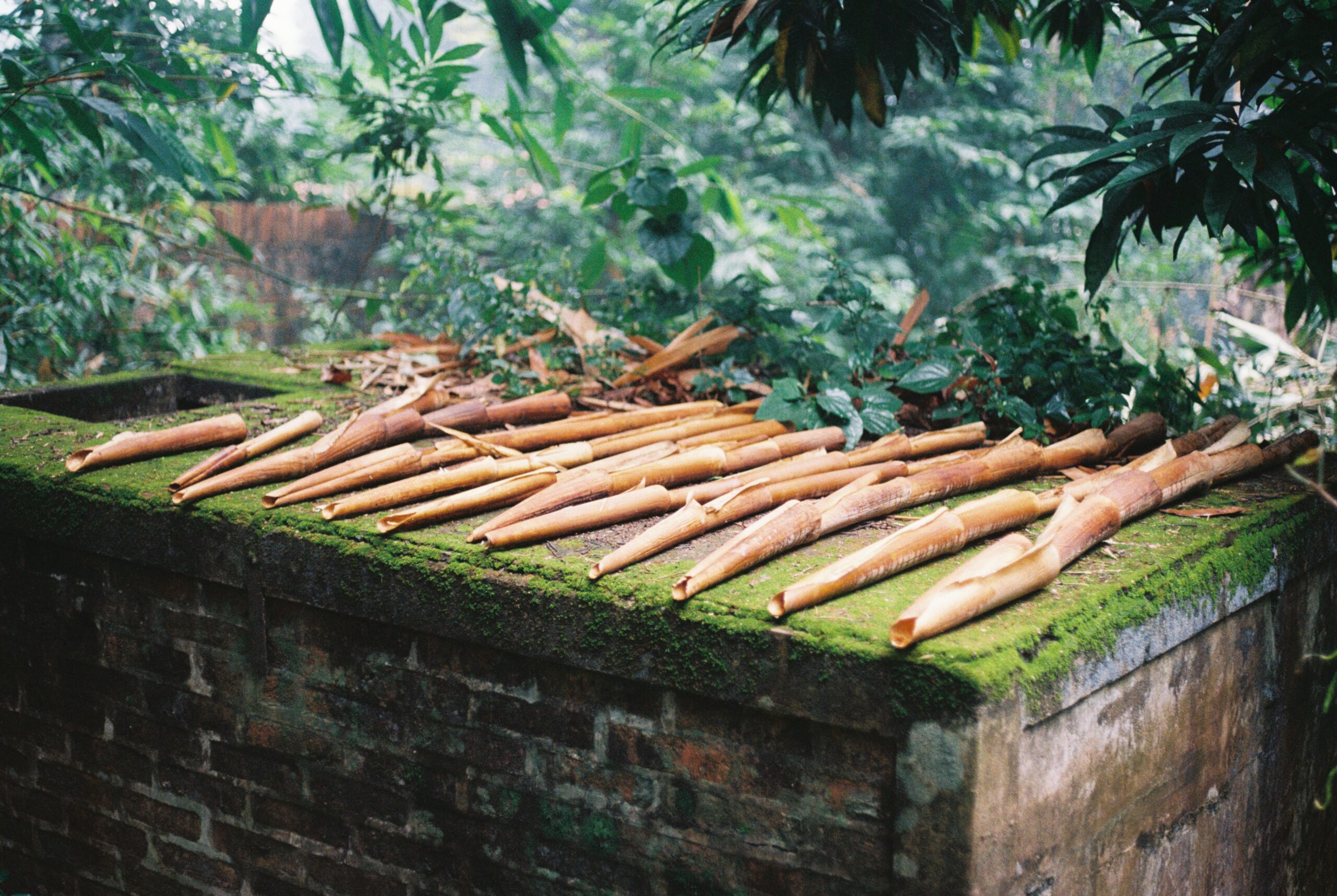Hidden Observatories
Creation of 5 observatories on the site of an old abandoned house in the village of Hien Van in Vietnam.
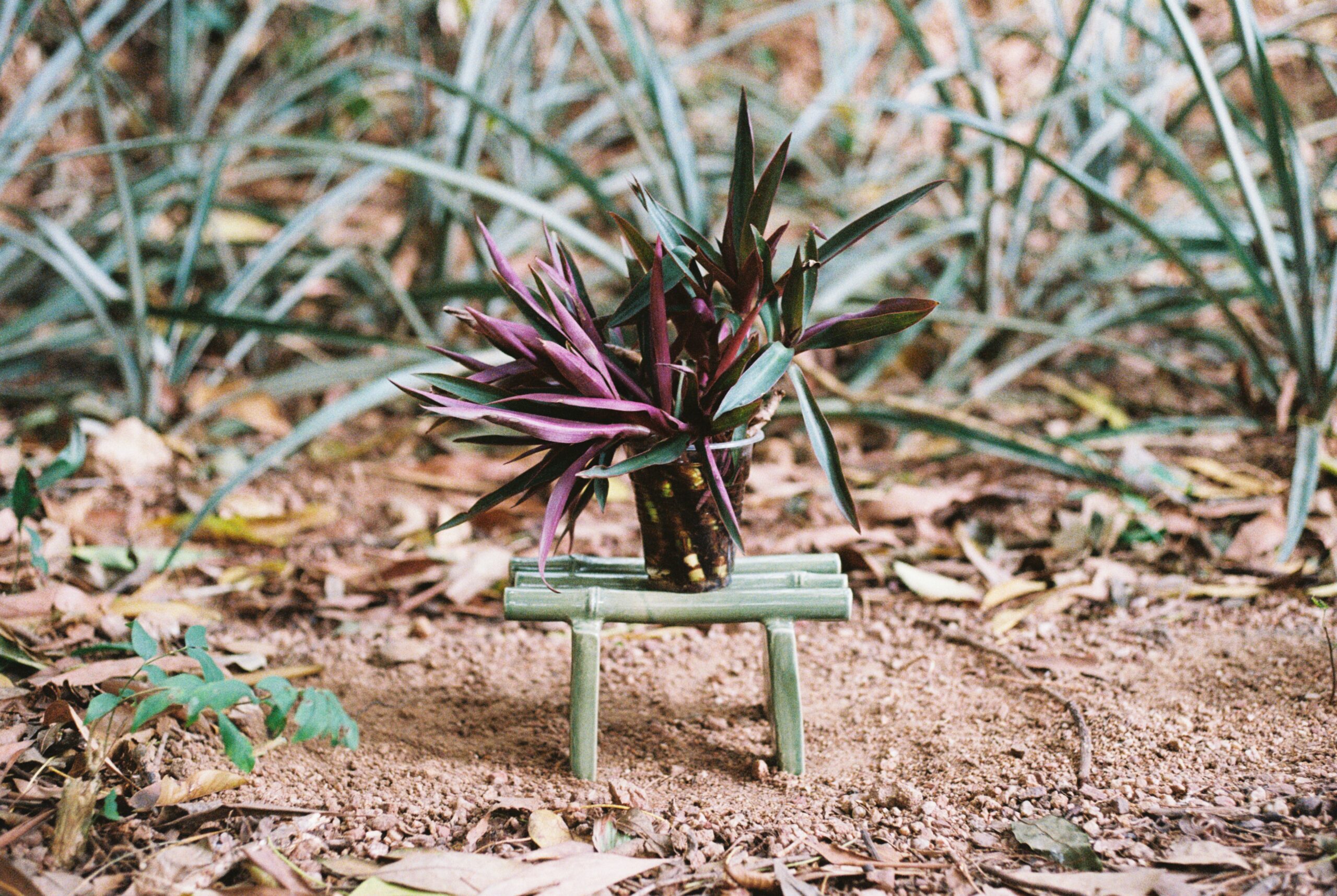
Hidden Observatories was created during the Live.Make.Share residency for 6 weeks in the village of Hien Van in northern Vietnam. At that time, I roamed the village in search of abandoned spaces and came to this reflection: they are everywhere and nowhere. Then, my host Elise Luong, showed me the site of an old house now in ruins. I found a kind of harmony there but also several divided spaces that allowed me to host my work. I then went to the ceramics workshop of Hien Van, where I began the production of different observation devices of the site where once stood the house of one of the richest families of the region before their luck changed.

Free birds and bees observatory, ceramic, bamboo, sweet water and bird seeds.
In Hanoi, there is a rather peculiar practice where men watch captured wild birds in bamboo cages. They listen to their song and decide which one is the most beautiful. I wanted to provide a place where one can listen to the song of birds in the wild by giving them water and small seeds to eat. The bamboo cage is replaced by sticks collected further away on the site. At the same time, Elise Luong sent me a text written by a beekeeper who explains that watching bees makes one happy, so I chose to combine the observation of bees and birds to do good.
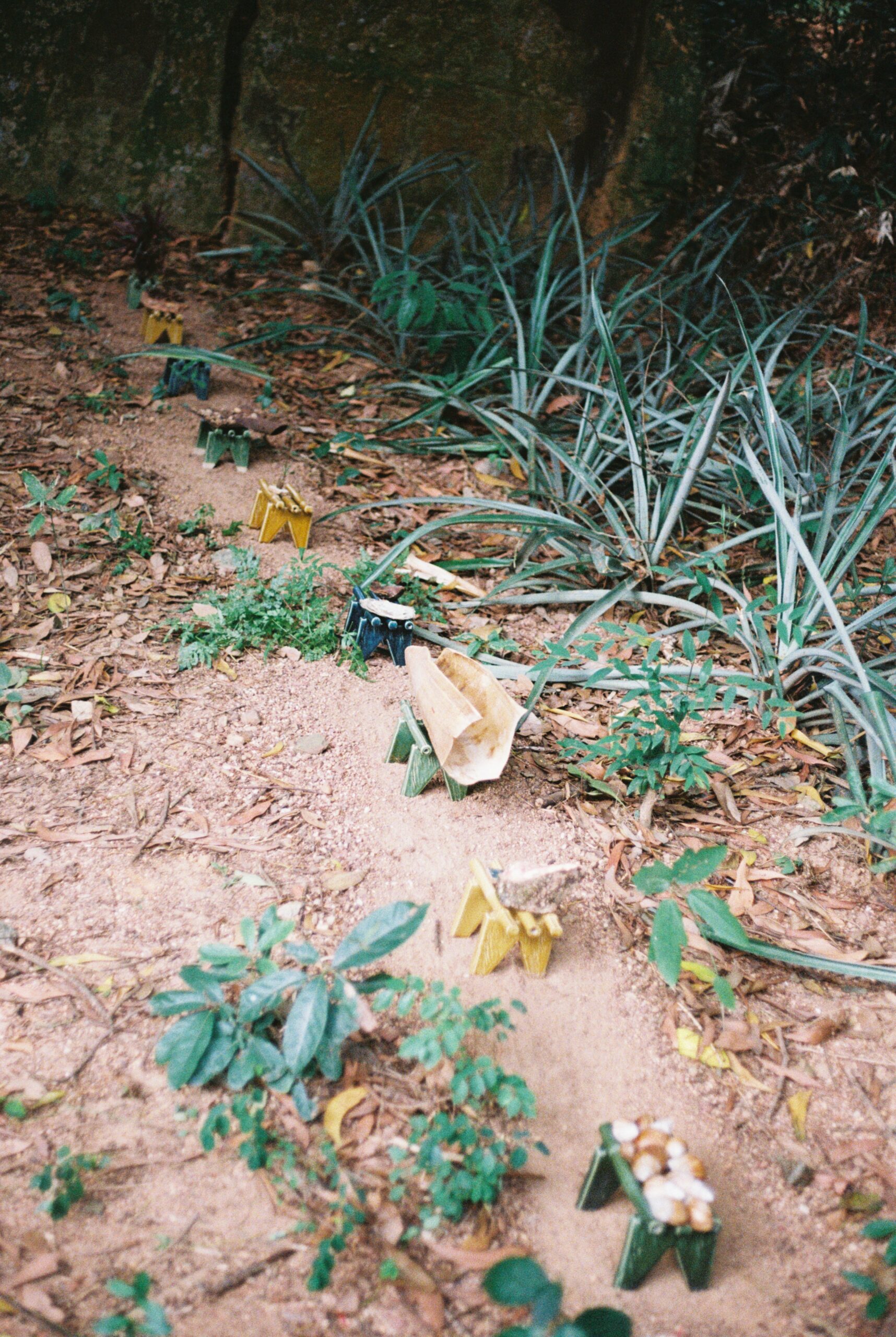
Stool Alter, ceramic and different things found on the site.
When I arrived in Vietnam, one of the things that immediately fascinated me were these little benches that everyone sits on. To work, eat, chat, take a break, there are these little benches everywhere, made of wood or simply plastic. I really wanted to create several to observe certain places. Then Elise told me that if it was only to look at something for 10 minutes, people would not sit on a bench but squat on the spot because that’s how we do it there. My little benches then came to establish my discoveries on the site, 9 small alters to share my own observations.
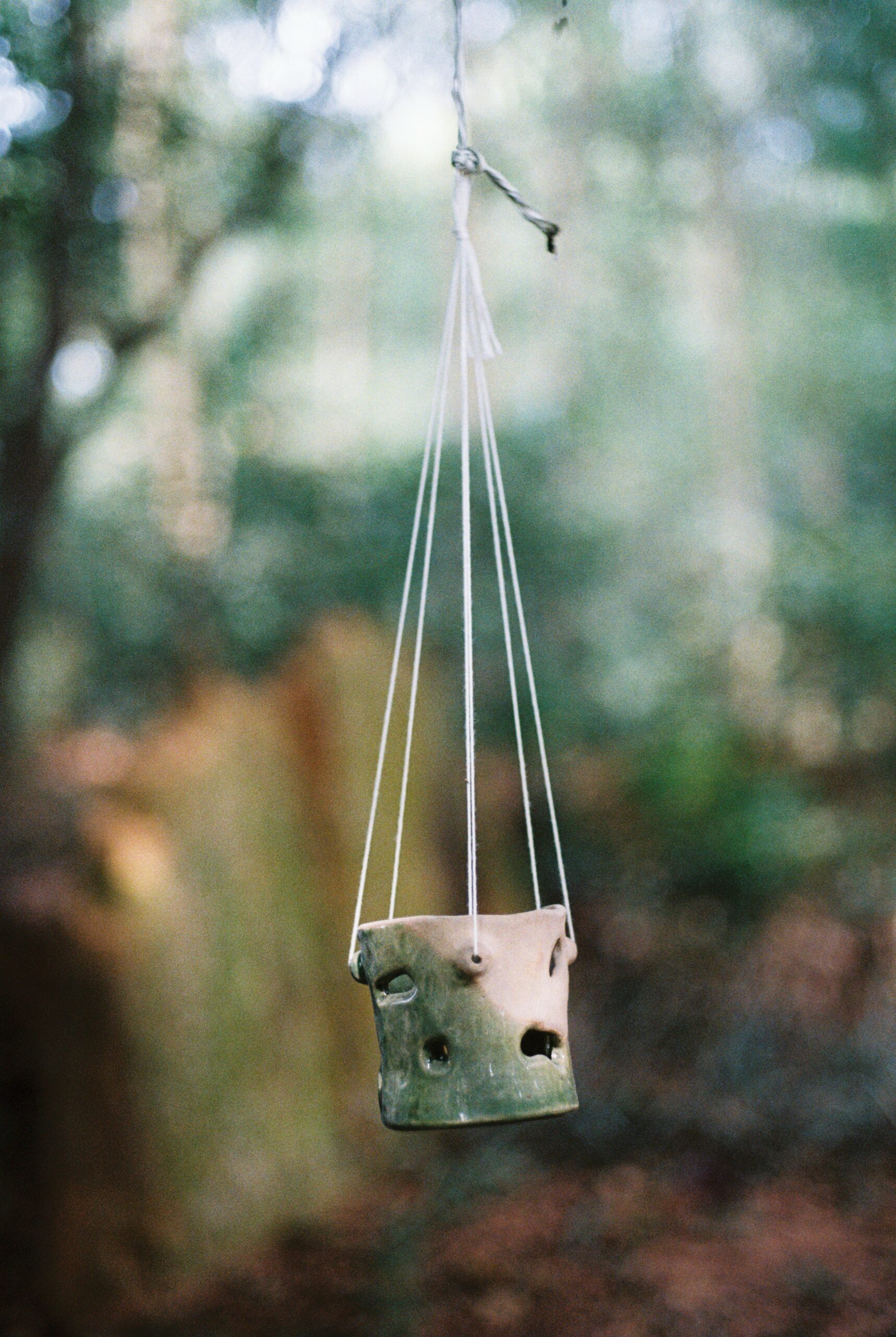
Under the shadow of the tree, ceramic, rope and stone.
At that time, I had never been so close to the equator in my life and one thing that surprised me was the time the sun sets. Obviously, I didn’t stay long enough to experience it throughout the year but it was very strange for me to see night fall between 5 and 6 p.m. Then, on the site of the abandoned house, there is a very large tree that, even during the day, gives an impression of night. That’s why I developed the installation Under the shadow of the tree which consists of a series of candlesticks hung with long ropes from the branches of the tree. They connect with a part of a stone wall of the old house. The state of abandonment represents the night, brought by this large tree, of the life of the house. The candles are there to illuminate and recall the light that once illuminated the house.
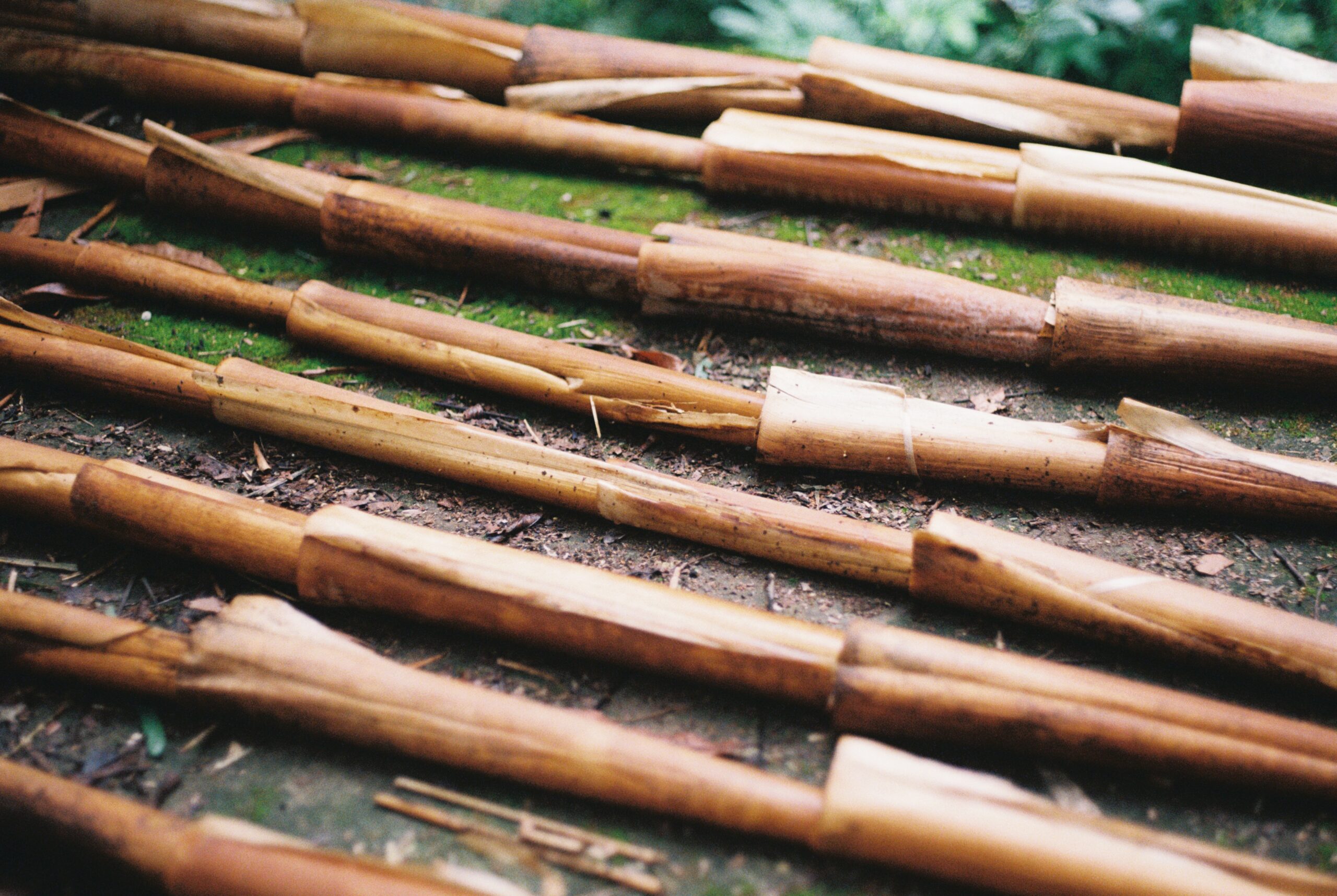
Humidity Observatory, in situ installation with bamboo bark which changes shape depending on humidity, placed on a well.
During a day exploring the surroundings of the house, I found an old well and nearby many bamboos. I noticed these barks fallen to the ground, as if the bamboo was shedding, like snake skin. I placed its barks on the well to reproduce a house tile pattern on a roof and I left. That evening, there was a light rain. The next day when I returned to see my installation, the bamboo barks were curled up like long straws. So I discovered this Humidity Observatory by chance.

